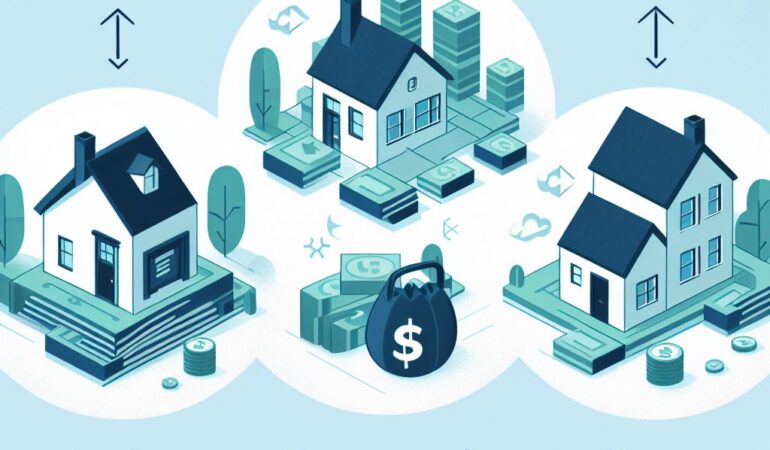Looking to defer taxes on your real estate investments? Look no further! In this article, we’ll guide you through three tax deferral options with 1031 exchange.
Whether you’re considering like-kind exchanges, reverse exchanges, or improvement exchanges, we’ve got you covered. Discover how these options can help you optimize your investment strategy and maximize your profits.
So why wait? Let’s dive into the world of tax deferral and unlock the potential of your real estate portfolio.
Key Takeaways
- Like-kind exchanges allow for the exchange of properties of the same nature or character, as long as they have similar use and are held for productive use in trade or business, or for investment purposes.
- Personal use properties, such as primary residences or vacation homes, do not qualify for a 1031 exchange.
- Like-kind exchanges provide the benefit of deferring capital gains taxes and allowing for the reinvestment of proceeds into like-kind property, which can help grow a real estate portfolio.
- Reverse exchanges and improvement exchanges are two additional options that provide flexibility and potential tax benefits, but they require careful planning and consultation with a qualified intermediary or tax professional.
Like-Kind Exchanges
If you’re considering a tax deferral option with a 1031 exchange, you’ll want to understand the concept of like-kind exchanges. A like-kind exchange refers to the exchange of one property for another property that’s of the same nature or character. This means that the properties being exchanged must be similar in terms of their use, such as exchanging a residential property for another residential property. However, it’s important to note that the properties don’t have to be identical in every aspect. For example, a single-family home can be exchanged for a duplex, or vacant land can be exchanged for a commercial building.
To qualify as a like-kind exchange, both properties must be held for productive use in a trade or business, or for investment purposes. Personal use properties, such as a primary residence or a vacation home, don’t qualify for a 1031 exchange. Additionally, the exchange must be completed within a specific timeframe. Once the relinquished property is sold, the replacement property must be identified within 45 days, and the exchange must be completed within 180 days.
Like-kind exchanges can offer significant tax benefits by allowing taxpayers to defer capital gains taxes that would otherwise be due upon the sale of a property. By reinvesting the proceeds into a like-kind property, investors can continue to grow their real estate portfolio without the burden of immediate tax liabilities. It’s important to consult with a qualified tax professional or real estate attorney to ensure compliance with the complex rules and regulations surrounding like-kind exchanges.
Reverse Exchanges
When considering tax deferral options with a 1031 exchange, you can explore the subtopic of reverse exchanges, which allow you to acquire a replacement property before selling your relinquished property. This can be particularly advantageous if you have found the perfect replacement property but haven’t yet sold your current property.
Here are four key points to consider:
- Timing flexibility: Reverse exchanges provide you with the flexibility to acquire your replacement property first, ensuring that you don’t miss out on any potential opportunities in the market. This can be especially beneficial in competitive real estate markets where properties may sell quickly.
- Improved negotiation power: By already having the replacement property in your possession, you’re in a stronger bargaining position when negotiating the sale of your relinquished property. This can potentially lead to more favorable terms and a higher sale price.
- Elimination of the 45-day identification period: Normally, in a 1031 exchange, you’re required to identify potential replacement properties within 45 days of selling your relinquished property. With a reverse exchange, this requirement is eliminated, giving you more time to find the right replacement property without the added pressure.
- Financing options: Reverse exchanges give you the opportunity to secure financing for your replacement property before selling your relinquished property. This can provide peace of mind and ensure a smoother transition between properties.
Improvement Exchanges
To continue exploring tax deferral options with a 1031 exchange, you can delve into improvement exchanges, which allow you to make improvements on your replacement property after acquiring it. With improvement exchanges, you have the opportunity to enhance the value of your property while still enjoying the tax benefits of a 1031 exchange.
When engaging in an improvement exchange, you can use part of the proceeds from the sale of your relinquished property to fund the improvements on your replacement property. These improvements can range from minor renovations to major construction projects. The key requirement is that the improvements must be completed within a specified timeframe, usually 180 days, as outlined by the Internal Revenue Service (IRS).
It’s important to note that the improvements made must result in an increase in the value of the replacement property. This increase in value will help justify the tax deferral benefits associated with the 1031 exchange. Additionally, any improvements made should align with your investment goals and objectives.
To ensure compliance with IRS regulations, it’s advisable to work with a qualified intermediary or a tax professional experienced in 1031 exchanges. They can guide you through the process, help you navigate the rules and regulations, and ensure that your improvement exchange is conducted properly.
Frequently Asked Questions
What Are the Tax Consequences of a Failed 1031 Exchange?
If your 1031 exchange fails, you may face tax consequences. When a like-kind exchange isn’t properly executed, you’ll need to recognize any gain and pay taxes on it. Seek professional advice to understand your specific situation.
Can a 1031 Exchange Be Used to Defer Capital Gains Taxes on the Sale of a Primary Residence?
Yes, you can use a 1031 exchange to defer capital gains taxes on the sale of a primary residence. This option allows you to reinvest the proceeds into a like-kind property, which can provide significant tax savings.
Are There Any Specific Time Limits for Completing a 1031 Exchange?
Yes, there are specific time limits for completing a 1031 exchange. You must identify a replacement property within 45 days of selling your current property and complete the exchange within 180 days.
Can a 1031 Exchange Be Used to Defer Depreciation Recapture Taxes?
Yes, a 1031 exchange can be used to defer depreciation recapture taxes. By exchanging a property for a like-kind property, you can defer the taxes on the accumulated depreciation until a later date.
What Happens if the Replacement Property Acquired in a 1031 Exchange Is Sold Within a Certain Period of Time?
If you sell a replacement property acquired in a 1031 exchange within a certain period of time, you may be subject to tax liabilities, such as recapturing the deferred gain and paying capital gains taxes.




